Operation Ceasefire
David M Kennedy's “Don't Shoot: One Man, a Street Fellowship, and the End of Violence in Inner-City America” is part memoir, part police thriller, taking us through the genesis and evolution of one of the most promising responses to urban violence and drug markets in the last two decades Kennedy's “Don't Shoot: One Man, a Street Fellowship, and the End of Violence in Inner-City America” is part memoir, part police thriller.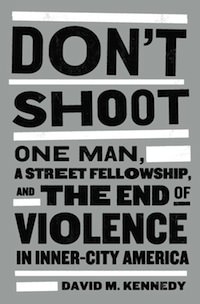
“Don’t Shoot: One Man, a Street Fellowship, and the End of Violence in Inner-City America”
A book by David M. Kennedy
Few white Americans are aware how racially segregated our society remains in the 21st century, yet the gaping divide becomes immediately apparent to anyone who gets behind prison walls. It is still a shock to me, even after years of driving the same route, to turn off the rural road lined with the homes of mostly white families onto the grounds of the prison in which I teach, where barbed-wire fences enclose a sea of dark faces. Inside the prison, instructors waiting for permission to proceed to classrooms watch inmates file past the grille gate like the sequential images of a filmstrip. Most are urban gang members convicted of gun violence and drug dealing. One by one, the tattooed, identically dressed young African-American men move silently along the hallway, staring straight ahead in compliance with prison rules.
As David M. Kennedy points out in his riveting new book, “Don’t Shoot: One Man, A Street Fellowship, and the End of Violence in Inner-City America,” the rise of mass incarceration in the U.S. has added terribly to the devastation that guns and drugs inflict on our inner cities. More than 2.3 million people in this country are now behind bars, almost 40 percent of them black. One in nine African-American men aged 20 to 34 is in prison; some 60 percent of black high school dropouts serve time by age 40. Many of the laws locking them up took shape during the crack epidemic of the 1980s and 1990s and the ensuing surge in gun violence. “Crack blew through America’s poor black neighborhoods like the Four Horsemen of the Apocalypse had traded their steeds for supercharged bulldozers,” Kennedy recalls. More than any other factor, the drug lit a fuse that littered city streets with the bodies of young “thugs” and innocent victims caught in the crossfire. Although homicides among black men aged 18 to 24 declined in the early 1980s, with crack the rate shot up, from 68 per 100,000 to more than 180 between 1984 and 1993.
Don’t Shoot: One Man, a Street Fellowship, and the End of Violence in Inner-City America
By David M. Kennedy
Bloomsbury USA, 320 pages
In the 1990s, municipal, state and federal governments responded to the violence by expanding police forces (45 percent in New York City) and sharply increasing prison sentencing. These policies, to some extent, made cities safer, but at an incredible social cost: So many men from impoverished urban neighborhoods do time that youths in the community come to see this as a normal stage in adult male life. The prisoners’ own children, raised by mothers and grandmothers struggling to find resources, are 50 percent more likely than other kids to end up in prison. Once inmates return home, their lack of education and job skills severely limit their chances of legal employment. Many fall back into crime and substance abuse, exacerbating the social, economic and moral decay of their communities and filling prisons yet again.
Given the ongoing economic crisis and rampant availability of guns in the U.S. — more than 200 million at current estimates, some 65 million of them handguns –the chances of breaking the cycle of inner-city poverty, violent crime, drugs and incarceration might seem bleak. But unlike so much work in urban sociology and criminology, “Don’t Shoot” offers a genuine message of hope. This is the gripping story of Boston’s Operation Ceasefire and the interventions it spawned across the nation. The book is part memoir, part police thriller, taking us through the ups and downs in the genesis and evolution of one of the most promising responses to urban violence and drug markets in the last two decades. The notes refer to scholarly studies affirming the merits of the strategies Kennedy and his associates developed over 16 years of work, but his writing here is the antithesis of academic jargon: a rapid-fire, street-smart prose that brooks no dissent, colored with telling detail to convey the tragedy of inner cities — the dealer hocking heroin in full view of the Baltimore police; the EMTs frantically trying to revive the young man dying at Kennedy’s feet; the RIP Facebook pages of black youth, still alive, preparing for their own deaths.
Kennedy acquired his knowledge of criminology without formal education in the field. We learn about his family’s experience in the Detroit riots of 1967 when he was 8, and his political activism at Swarthmore. From Swarthmore he went to Harvard’s Kennedy School of Government where he joined a team headed by professor Mark Moore to study the new ideas of problem-oriented policing. Working for Moore took Kennedy to Los Angeles in 1985, where he accompanied two officers on foot patrol through the crack-infested Watts housing project of Nickerson Gardens, perhaps, Kennedy writes, the most dangerous place in the country that day. “If you could have seen the fear and tension — fear-vision goggles — everything would have glowed white-hot.” Despite the horror of such neighborhoods, he realized, there was a profound sense of community among their “decent” residents (to borrow Elijah Anderson’s term) — the majority of adults who fretted over their children’s safety, made sure they were fed, properly clothed and went to school, and helped one another through the roughest periods. Visiting Watts had a visceral effect on Kennedy. He threw himself into researching drug markets, but within 10 years he needed to do more than study the problems. Although his knowledge of academic criminology is formidable, he met his most important teachers in the field: cops who took him on patrol rides; Paul Joyce, head of Boston’s Youth Violence Strike Force that developed the Wendover Street operation, a model for Operation Ceasefire; gang outreach groups like Boston’s Streetworkers; gang members who told Kennedy of the fear that drove them to carry guns; local women who wept as they remembered children, grandchildren, brothers and cousins killed in gang warfare, yet recounted the terror of police raids and their hatred of police who harassed the young men through the “zero tolerance” and “stop and frisk” tactics that have inflamed targeted neighborhoods.
The book opens with Timothy Thomas, a 19-year-old, unarmed black father in Over-the-Rhine, Cincinnati, shot to death in April 2001 as he ran from police. Why did he run? Because he had 14 outstanding warrants, mainly for minor traffic offenses. In Cincinnati’s most dangerous district, hours of policing went into ticketing traffic violations. Thomas was the 15th young black male killed by Cincinnati cops or dying in their custody since 1995. His death sparked four days of rioting.
Both my gang-member students at the prison and the many women I’ve talked with in the distressed city of Camden, N.J., who invariably detest the police, have taught me much about the moral corrosiveness of guns, substance abuse, poverty and crime. A central theme of “Don’t Shoot,” however, is that we cannot end the violence and mass incarceration plaguing our inner cities unless we bridge the chasms of misunderstanding and suspicion that separate law-abiding inhabitants, the police and gangs. All three “communities,” as Kennedy insists, include rational, fundamentally decent people. Sometimes they behave in destructive ways, but most would act differently if another path were made clear to them through the chaos.
Don’t Shoot: One Man, a Street Fellowship, and the End of Violence in Inner-City America
By David M. Kennedy
Bloomsbury USA, 320 pages
In 1994, Kennedy and his collaborator, Anne Piehl, set out to find such a path. Armed with a grant from the National Institute of Justice, they contacted the Boston police commissioner, who put them in touch with Joyce to discuss applying problem-oriented policing to gun homicides among Boston’s youth. In problem-oriented policing, specific types of crime are studied to devise new strategies for preventing them. Public and private partners help implement the strategies, results are evaluated and adjustments are made for the next time around.
The “Working Group” of the Boston Gun Project began meeting in early 1995. While Boston had lower rates of gun violence than New York and other large cities, a surge in homicides in the poor black districts of Roxbury, Dorchester and Mattapan had overwhelmed police. Homicide among men below age 24 soared from 22 to 73 victims between 1987 and 1990 and averaged 44 victims yearly between 1991 and 1995. Gang members were not the only casualties; innocents like 12-year-old Tiffany Moore also died. The Working Group sought a “near-term” solution to this crisis. Analysis revealed, contrary to expectations, that a small number of gang members in a few “hot spots” were responsible for a disproportionate number of homicides. Recognizing that Boston police lacked the capacity to stop all gang crime, Kennedy’s team developed a “retail deterrence” strategy. One of the worst offenders was arrested and given a 19-year sentence in a distant federal prison. Meetings were then convened with police, youth workers, probation and parole officers, and community leaders who told invited gang members what had happened. The young men attending the “call-ins” were promised jobs, housing and protection, all on one condition: The shooting had to stop. The first one to violate the cease-fire would cause all “levers” to be pulled. The entire gang would be punished; penalties would be swift, severe and 100 percent certain.
The result has been called the Boston Miracle. Follow-up studies correlated Operation Ceasefire with a 63 percent decline in youth homicide. The program quickly gained national attention and went on the road, first to Minneapolis and then Stockton, Calif. Over the next 15 years, the Working Group and its national partners refined their strategies and extended them to other problems — sexual assaults in Memphis, Tenn.; open-air drug markets in High Point, N.C.; and other cities. Much data shows that the interventions have been very effective, though they are not the only policies to have made a difference. Although whites in the U.S. outnumber blacks, as Kennedy stresses, the latter are still much more likely to be killed: In 2005, more than 2,200 black men aged 18 to 24 were homicide victims, compared with 1,400 whites. The rate again seems to be rising; in New York City, white homicides decreased 27 percent in 2010 but increased 31 percent among black men. In light of these grim statistics, Kennedy is abruptly dismissive of scholars, politicians and police who have questioned his assessment of the problems or the benefits of Ceasefire. Yet he gives too short shrift to the decline of gun violence during the 1990s in cities that tried other responses. The significant decrease in New York City between 1995 and 2001 has been credited to its enlarged police force and zero-tolerance tactics, though with terrible damage to civil liberties and relations between police and minority communities. Some studies suggest that Boston homicides possibly began to subside before Ceasefire was under way. There too other interventions and factors may have contributed.
The my-way-or-the-highway tenor of parts of “Don’t Shoot” goes hand-in-hand with the misleading “one man” of its subtitle. As becomes clear from Kennedy’s own narrative, Ceasefire depended on the painstaking development of partnerships between multiple individuals and agencies. It cannot be replicated everywhere partly for this reason; even in Boston, the interagency collaboration of the 1990s fell apart in 2000.
Although Kennedy is highly critical of challengers, he does not stint in praising his many associates around the country who have shared his passion and struggled alongside him to develop strategies, if only for a time. The good they achieved was not a miracle, he notes, but the result of long hours of grinding work — another reason the Ceasefire approach has sometimes proven hard to disseminate. People like Kennedy, obsessed with a vision of how to diminish suffering in this world and driven to act on their vision, are not always pleasant. They don’t have to be. What we need is for them to light a fire under the rest of us so that we also get to work, perhaps finding ways to reduce the violence in cities where Ceasefire was not successfully implemented. “Don’t Shoot” may be the spark.
Celia Chazelle is chair of the history department at The College of New Jersey and co-founder of its Center for Prison Outreach and Education.
Your support matters…Independent journalism is under threat and overshadowed by heavily funded mainstream media.
You can help level the playing field. Become a member.
Your tax-deductible contribution keeps us digging beneath the headlines to give you thought-provoking, investigative reporting and analysis that unearths what's really happening- without compromise.
Give today to support our courageous, independent journalists.

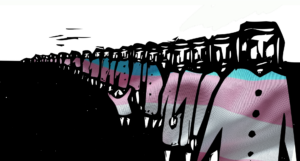
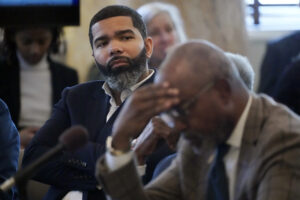
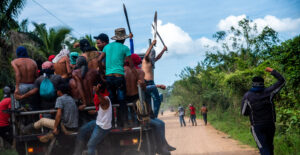

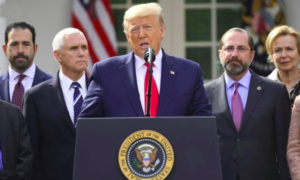
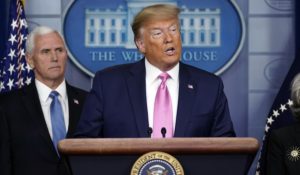
You need to be a supporter to comment.
There are currently no responses to this article.
Be the first to respond.